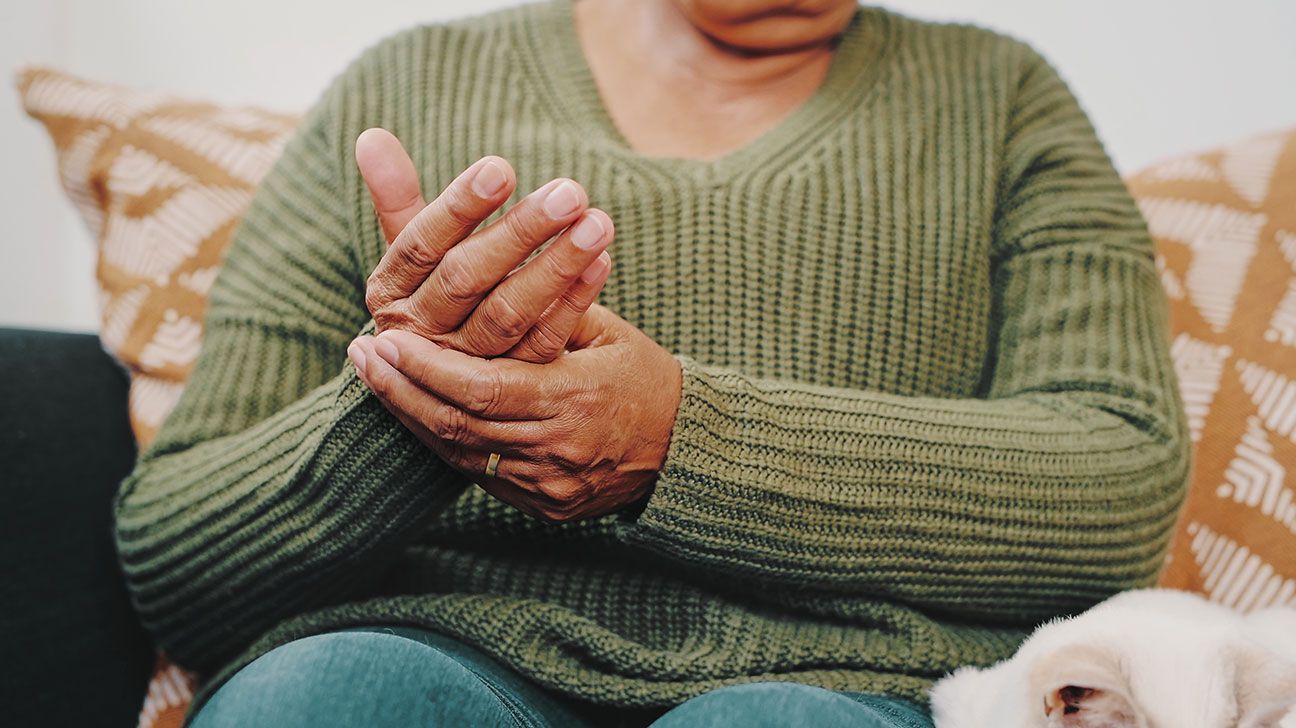Rheumatoid arthritis (RA) is an autoimmune disorder that affects your joints. It’s unclear what exactly causes RA, but many factors, such as genetics, infections, sex, and more, may all contribute.

Rheumatoid arthritis (RA) is an autoimmune disorder that causes inflammation in your joints. Doctors don’t know exactly what causes this condition. But the following factors could play a role in triggering it:
- genetics
- trauma
- sex
- infection with a bacteria or virus
The joints most affected by RA are the hands and feet. People with RA experience stiffness in the joints and other symptoms like problems with their lungs, heart, and eyes.
A family history of RA can increase your chances of developing the condition. Researchers have also identified genes associated with a greater risk of RA. It’s likely that
One example is the HLA-DRB1 gene genetic marker, the strongest genetic risk factor for RA identified to date. There are many variations of these markers, and a person with the HLA marker is five times more likely to have RA than those without it. Having the HLA marker doesn’t mean you‘ll develop RA. It only means you have an increased risk.
Other genes associated with RA include:
- PTPN22: Researchers think this gene plays a role in the development and progression of RA.
- STAT4: This gene handles activating and regulating the immune system.
- TRAF1 and C5: Researchers associate these genes with chronic inflammation.
- PADI4: Research suggests this gene is associated with an increased risk of RA in certain groups.
Researchers suspect a connection between RA and exposure to some viruses and bacteria.
Bacteria
Researchers suspect infectious agents like bacteria could cause inflammation that triggers RA. They’ve detected bacteria in the synovial tissue (tissue that surrounds joints).
A 2016 study found that Aggregatibacter actinomycetemcomitans, a bacteria known to cause chronic inflammatory gum infections and periodontal disease, may contribute to RA. The proteins this bacteria produces are a known RA trigger in some people, and gum disease and RA often occur together.
A 2023 study in mice suggests that bacteria found in the gut may also contribute to symptoms of RA, but more research is needed, including studies in humans.
Viruses
Viruses may also play a role in triggering RA. Most people with RA have
Other viruses that may cause RA include retroviruses and parvovirus B19, which causes fifth disease.
Examples of trauma include:
- bone fractures
- joint dislocations
- ligament damage
More research is needed to identify a true cause-and-effect between physical trauma and RA. This is because trauma may not immediately trigger RA. It could cause inflammation that could eventually lead to RA.
Cigarette smoking can affect the onset of RA, the severity of symptoms, and the effectiveness of treatment. A
The effects of smoking on the body »
Smoking can increase the severity of symptoms in people with RA. It can also interfere with the effectiveness of your RA medications or other treatments. And smoking may make it more difficult to exercise.
If you need surgery, smoking may increase the chances of complications. Nonsmokers seem to do better after surgery.
Never smoking or quitting smoking can help reduce your chances of developing RA.
Hormones
An estimated
Since a larger number of women have RA compared with men, female hormone levels may contribute to the disease’s development. For example, some women may have fluctuations of RA symptoms when they are pregnant. A woman’s symptoms may subside when she’s pregnant and then worsen after pregnancy.
Nursing, and the increased hormone levels associated with it, may also worsen RA symptoms. Taking birth control is also associated with an increased risk of developing RA.
Language Matters
You’ll notice we use the binary terms “women” and “female” in this article. While we realize these terms may not match your gender experience, they are the terms used by the researchers whose data was cited. We try to be as specific as possible when reporting on research participants and clinical findings.
Unfortunately, the studies and surveys referenced in this article didn’t report data for or may not have had participants who are transgender, nonbinary, gender nonconforming, genderqueer, agender, or genderless.
Irritants and pollutants
Researchers have linked exposure to air irritants to developing RA. Examples include:
- cigarette smoke
- air pollution
- insecticides
- exposure to minerals in the air, such as silica and asbestos
Obesity
According to the Arthritis Foundation, an estimated two-thirds of people with RA have obesity or overweight. Fat in the body can release proteins that are connected with causing inflammation. Specifically, fat releases cytokines, which are also compounds released in inflamed joints. The more a person is overweight, the more severe their RA symptoms seem to be.
Obesity also seems to affect traditional RA treatments. A class of anti-RA drugs known as disease-modifying antirheumatic drugs (DMARDs) are less effective over the course of a year in people who are overweight compared with people with RA who are average weight. Being obese alone isn’t likely a sole contributing factor to RA.
An RA flare is a sudden episode or flare-up of RA symptoms. There are certain things that may cause your RA to flare, such as:
- diet
- trauma
- fatigue
- infection
- weather changes
- smoking
- emotional and physical stress
- long periods of standing or being active
RA is a disease with some contributing factors like genetics, the environment, and hormones. Other conditions like trauma and infections are important to recognize as potential trigger mechanisms.
There are a few known factors that you can alter to reduce your risk. They include:
- quitting smoking
- losing weight
- limiting your exposure to environmental pollutants, like air pollution and hazardous chemicals
- seeing your doctor as soon as you develop symptoms since early and aggressive treatment may delay disease progression
Taking these steps may also keep RA from getting worse. Continuing research to determine potential causes and targeted treatments for managing RA remains a priority for researchers.
